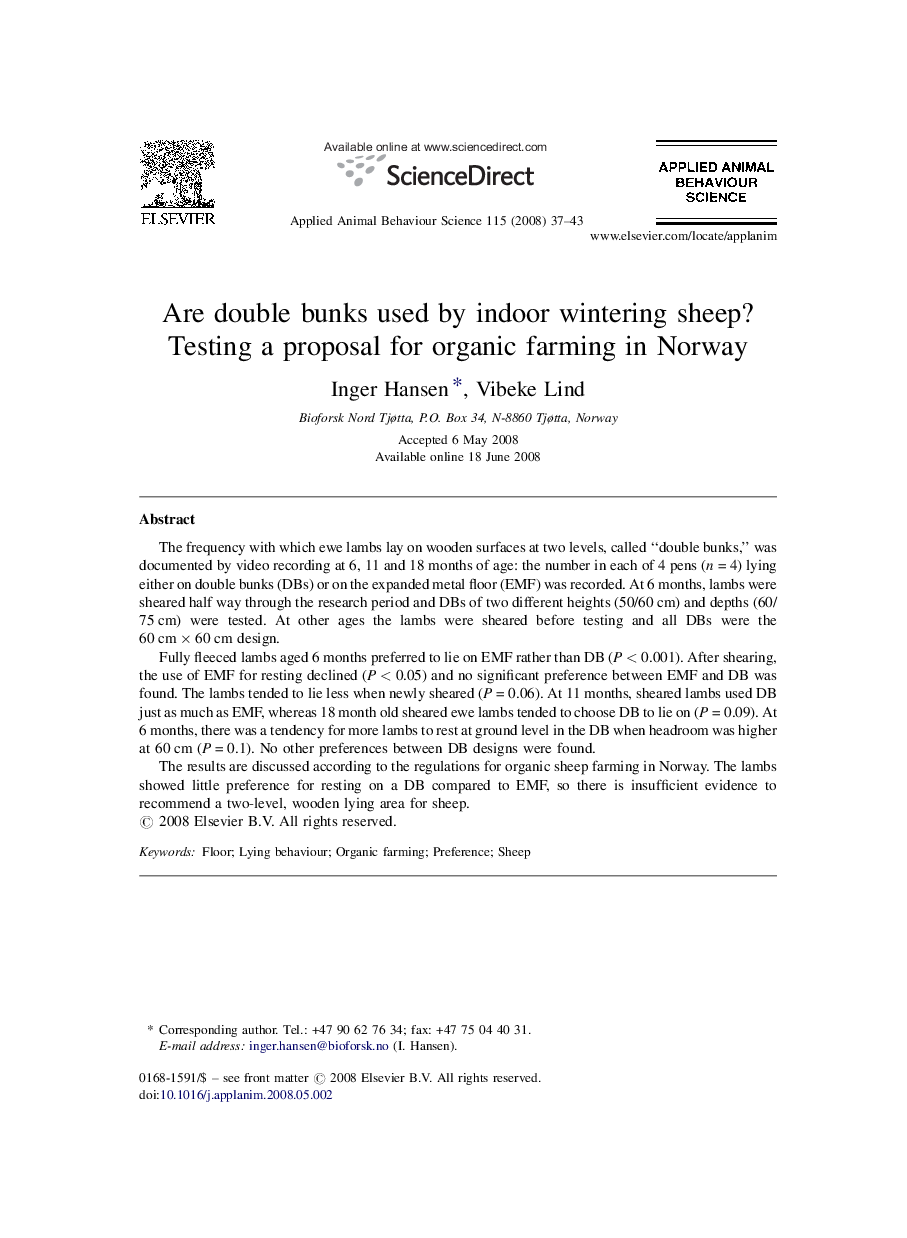| کد مقاله | کد نشریه | سال انتشار | مقاله انگلیسی | نسخه تمام متن |
|---|---|---|---|---|
| 4523636 | 1625416 | 2008 | 7 صفحه PDF | دانلود رایگان |

The frequency with which ewe lambs lay on wooden surfaces at two levels, called “double bunks,” was documented by video recording at 6, 11 and 18 months of age: the number in each of 4 pens (n = 4) lying either on double bunks (DBs) or on the expanded metal floor (EMF) was recorded. At 6 months, lambs were sheared half way through the research period and DBs of two different heights (50/60 cm) and depths (60/75 cm) were tested. At other ages the lambs were sheared before testing and all DBs were the 60 cm × 60 cm design.Fully fleeced lambs aged 6 months preferred to lie on EMF rather than DB (P < 0.001). After shearing, the use of EMF for resting declined (P < 0.05) and no significant preference between EMF and DB was found. The lambs tended to lie less when newly sheared (P = 0.06). At 11 months, sheared lambs used DB just as much as EMF, whereas 18 month old sheared ewe lambs tended to choose DB to lie on (P = 0.09). At 6 months, there was a tendency for more lambs to rest at ground level in the DB when headroom was higher at 60 cm (P = 0.1). No other preferences between DB designs were found.The results are discussed according to the regulations for organic sheep farming in Norway. The lambs showed little preference for resting on a DB compared to EMF, so there is insufficient evidence to recommend a two-level, wooden lying area for sheep.
Journal: Applied Animal Behaviour Science - Volume 115, Issues 1–2, 15 December 2008, Pages 37–43